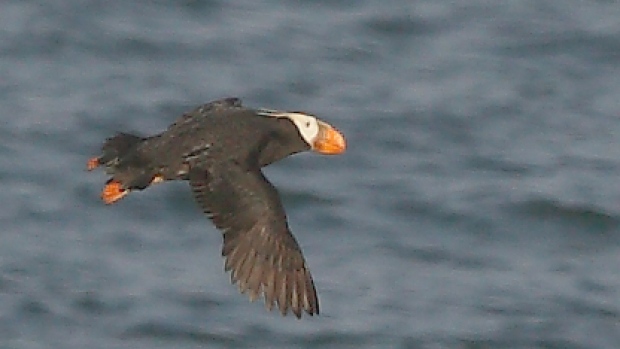
© Ralph EldridgeMachias Seal Island lighthouse keeper Ralph Eldridge photographed a tufted puffin on the island.
The first sighting of a
tufted puffin on the east coast of North America in almost 200 years has people wondering how the common Pacific coast seabird made it to the Atlantic waters.
Ralph Eldridge, the lighthouse keeper on Machias Seal Island in the Bay of Fundy, spotted the bird and noted it was different from the thousands of Atlantic puffins found at the Canadian Wildlife Service sanctuary on the island.
"It stood out as different from our Atlantic puffins - larger, blacker but with a conspicuously orange beak and most notable, a very white face," said Eldridge in an email to CBC News.
Eldridge alerted Tony Diamond, a biology professor from the University of New Brunswick, who is on the island running the
Atlantic Laboratory for Avian Research.Diamond was able to view the bird in a large telescope and confirm the identification.
Tufted puffins are common on the Pacific coast from Alaska to northern California, breeding on offshore islands.
Jim Wilson, a naturalist, said the last recorded sighting of one in the North Atlantic was in the 1830s in Maine.

Comment: This is another example of the PTB trying to sidestep the greater problems caused by methane and other oil chemicals polluting the atmosphere and ground water by linking this to the non-issue of greenhouse gasses and global warming. The earth has not been warming for the past 16 years nor are greenhouse gasses causing the extreme climate changes the earth has been experiencing. For information on what is actually causing these changes, listen to the SOTT radio broadcast on Earth Changes in an Electric Universe.
Methane Gas Is Contaminating Drinking Water
Fracking rural America to death: First solid case of aquifer contamination recorded in Texas